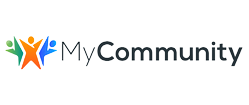Right Person, Right Place: Proper Placement for Staff & Volunteers
When discussing who should be a part of the organization, Gino Wickman, in his book Traction: Get a Grip on Your Business, touts the importance of making sure those who are part of your nonprofit are in the right seat. The right people in the right seats is a shorthand way of analyzing the roles needed to advance the vision of your organization and who is fulfilling those roles. In the nonprofit context, special considerations should be made for this principle because nonprofits not only deal with paid staff but also volunteer staff.
Being sure that everyone in an organizational structure is properly set up is crucial; for example, making sure that the correct employees are in their positions and that the proper leaders are working on the appropriate team. Even though nonprofits are actively trying to help people in need, that does not necessarily suggest that they should not be paying attention to running the organization well. This oversight can be damaging to the organization if not prioritized appropriately. Because nonprofits are largely reliant on volunteers, who are not paid for their services, this can be a difficult thing to manage, but it is crucial in maintaining the vision of the organization.
People (both volunteers and employees) are essential for nonprofits to succeed but can also prevent progress if not aligned with the organization’s vision. Strategically, a simple three-step strategy for role development is:
- Identify the parameters of the role based on the vision of the organization.
- Find the person to start developing and applying the roles of the position.
- Empower this person to start to train others in how to accomplish this role with vision as the priority.
Implementing this process will allow a nonprofit to identify individuals, especially volunteers, who are serious about advancing the mission of the organization. If someone cannot get out of the idea stage into the application stage, they are likely not the best fit for that role. As many people join the organization, a nonprofit must be organized and empowered to exercise their authority and make decisions around personnel.
It is common for nonprofit organizations to have difficulties when it comes to defining their roles because they typically do not have the resources to bring on more employees when starting new initiatives. Likewise, the priority nonprofits must have on the people who participate in their organization should be high on the list. Examples of the various relational dynamics at play are as follows: employees and volunteers, board members and directors, directors and employees, etc.
Pay special attention to any poor coordination or communication within the organization. Your organization may want to invest in a personnel-centered assessment to ensure the relational dynamics are kept in mind. Examples of these assessments include DISC, FIT, and StrengthFinder2.0. The purpose of these tests are to help people become better leaders and identify strengths and leadership styles. These assessments are very helpful, but it is more helpful to discuss with others what this indicates in terms of how to develop people.
MyCommunity helps to train and coach organizations and also offers offers robust, affordable software to help maintain volunteer and data management systems. Our suite of tools is designed to help organizations of all sizes focus on their mission without worrying about the logistics. We understand the importance of building strong relationships, so we provide the necessary tools to maximize impact and make a difference like our easy-to-use platforms MyDonors and MyVolunteers. Likewise, MyNonprofitCoach equips nonprofits with the training they need to be successful. Schedule a demo for any of our solutions here.
* * * * *


